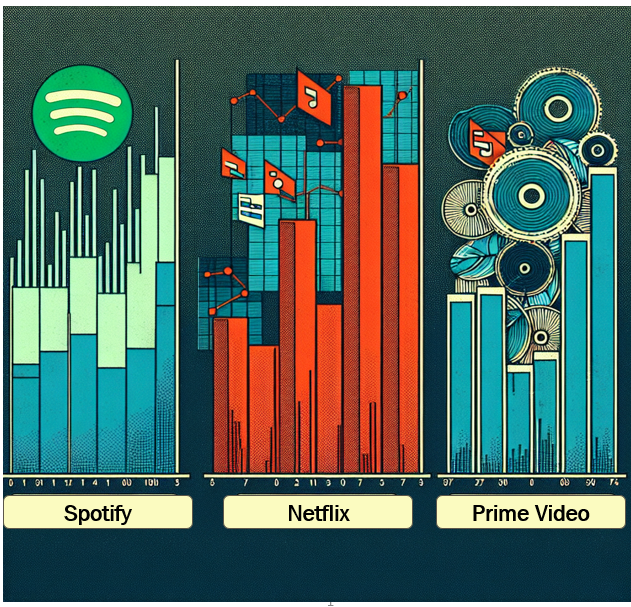"What Caught My Eye Last Week" In Advertising (1st June to 8th June)
1.Amazon Launches Private Auctions on Prime Video, Transforming CTV Ad Buying

- What happened?
Amazon introduced private auctions (PA) for Prime Video ad inventory, replacing fixed CPM pricing with dynamic bidding. Marketers can now set bid floors and ceilings, enabling real-time price optimization and saving up to 20%. However, these deals come with fewer delivery guarantees, especially during peak demand periods. - Why it matters?
This move disrupts the traditionally fixed-price CTV ad market by offering greater flexibility and cost control. It empowers advertisers—particularly smaller and performance-focused agencies—to access premium Prime Video inventory more efficiently, improving budget allocation and campaign agility in a competitive streaming environment. - Future impact:
Private auctions signal a shift toward more programmatic, auction-based models in CTV advertising. This innovation could broaden access to premium streaming ads, promote more granular targeting and optimization, and push other platforms to adopt dynamic pricing, fundamentally changing how CTV inventory is bought and monetized.
2.Marketers Shift Millions from The Trade Desk to Amazon DSP, Citing Cost and Access Advantages

- What happened?
Several major advertisers, including a global auto brand, moved tens of millions of dollars in CTV ad spend from The Trade Desk to Amazon’s DSP by Q1 2025. Amazon’s platform offers lower fees, better UI, exclusive inventory, and more flexible buying options, enticing significant budget shifts. - Why it matters?
This migration highlights Amazon’s growing dominance in programmatic CTV advertising through competitive pricing and unique access to Prime Video and exclusive live sports. Advertisers benefit from improved measurement, data-driven targeting, and a partnership approach, reshaping DSP selection and media planning strategies. - Future impact:
Amazon’s aggressive fee reductions and expanded third-party supply deals (e.g., Hulu, Samsung TV Plus) signal a consolidation trend in DSP market share. This intensifies competition, driving innovation and efficiency demands that could redefine how brands buy CTV inventory and leverage data across platforms.
3. Rethinking Frequency Management: Amazon’s Signal-Based Alternative to Ad IDs

- What’s new?
Amazon Ads has unveiled a fresh approach to frequency management called total exposure modeling. Rather than depending on conventional ad identifiers, this method applies predictive analytics to assess how often users are exposed to ads across various formats—such as online media, connected TV, and traditional television. By factoring in both confirmed and estimated exposures, it ensures ads are shown at moments of maximum impact, thereby improving efficiency. - Why it matters:
With increased privacy regulations and fading reliance on persistent user identifiers, older frequency capping methods (like once per day or three times a week) are no longer sufficient. Amazon’s system gives marketers a comprehensive view of user engagement across platforms, allowing them to fine-tune exposure levels. This shift enables more relevant ad placements, better user experiences, and smarter use of media budgets through real-time, behavior-informed bidding. - What’s ahead:
As digital advertising moves away from user-level tracking, strategies based on aggregated behavioral signals will become standard. Amazon’s model is at the forefront of this transition—offering scalable, privacy-conscious frequency control. The future of frequency management lies in adaptive, signal-based models that reduce ad fatigue, increase performance, and allow brands to optimize reach with precision across fragmented media landscapes.
Featured Blogs

TRENDS 2024: Decoding India’s Zeitgeist: Key Themes, Implications & Future Outlook

How to better quantify attention in TV and Print in India

AI in media agencies: Transforming data into actionable insights for strategic growth

How the Attention Recession Is Changing Marketing

The New Luxury Why Consumers Now Value Scarcity Over Status

The Psychology Behind Buy Now Pay later

The Rise of Dark Social and Its Impact on Marketing Measurement

The Role of Dark Patterns in Digital Marketing and Ethical Concerns

The Future of Retail Media Networks and What Marketers Should Know
Recent Blogs

Trending Topics of The Week (2nd December – 8th December)

Trending Topics of The Week (25th November – 1st December)

Trending Topics of The Week (18th November – 24th November)

Trending Topics of The Week (11th November – 17th November)

Trending Topics of The Week (4th November – 10th November)


